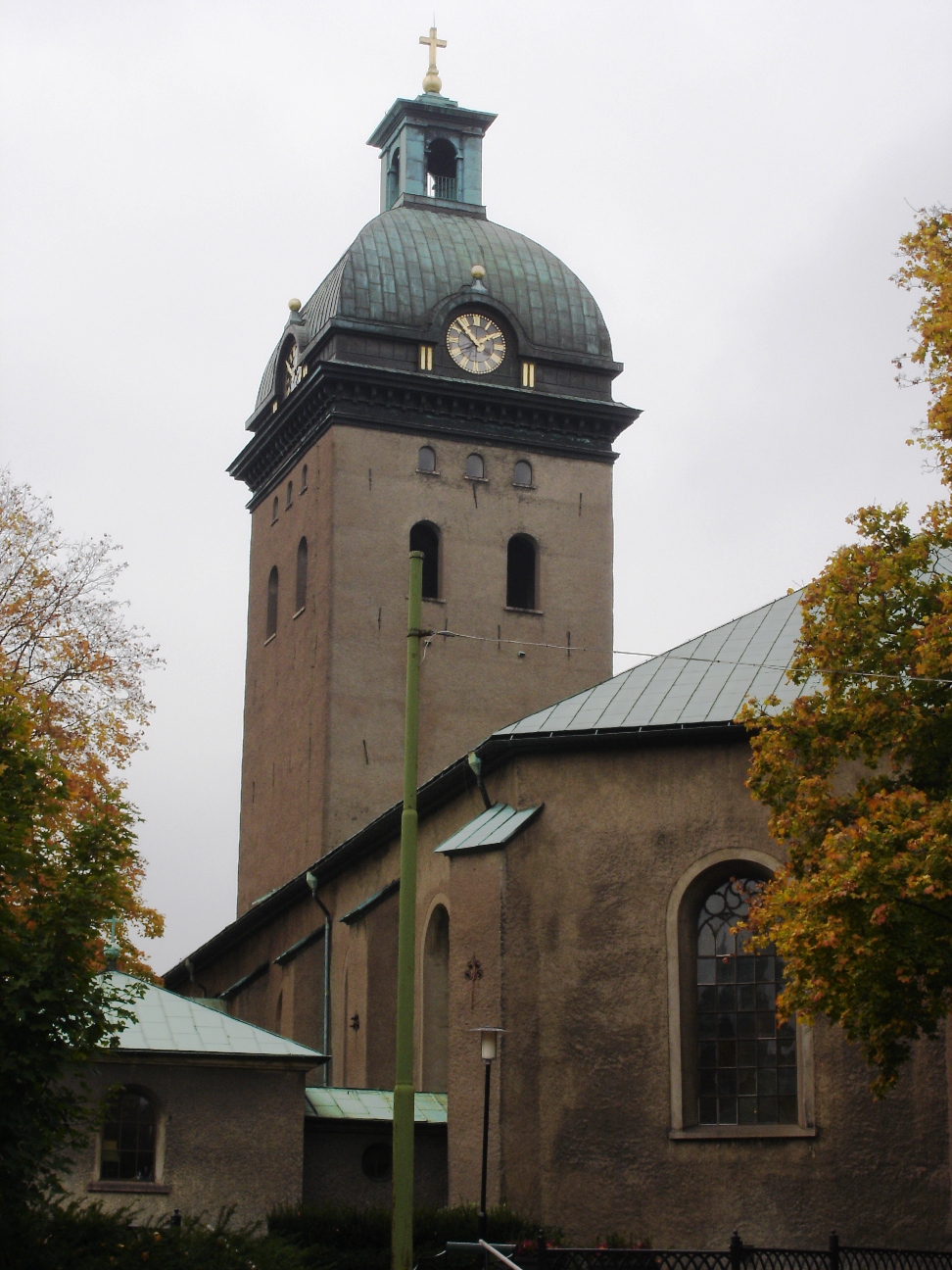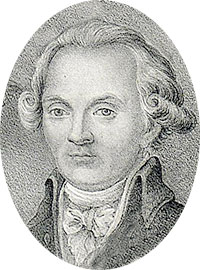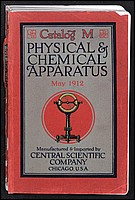|
Borås
Borås ( , , ) is a city (officially, a locality) and the seat of Borås Municipality, Västra Götaland County, Sweden. It had 66,273 inhabitants in 2010. Geography Borås is located at the point of two crossing railways, among them the railway between Gothenburg and Kalmar, and is often considered the Swedish city gaining the most from the nationwide railway system laid between 1870 and 1910. History The city of Borås received its privileges in 1621 by King Gustav II Adolf. The reason was to give local pedlars a legal place for vending their merchandise (and for the government the ability to collect taxes on this trade). The city developed soon after it was founded. After a century it had increased to over 2,000 inhabitants. Borås has been ravaged by fires four times: in 1681, 1727, 1822 and 1827. The Caroli church is the oldest of Borås's buildings, and has withstood all fires. In its 2017 report, Police in Sweden placed the Norrby, Hässleholmen and Hult ... [...More Info...] [...Related Items...] OR: [Wikipedia] [Google] [Baidu] |
Borås Municipality
Borås Municipality (''Borås kommun'') is a municipality in Västra Götaland County in western Sweden. Its seat is located in the city of Borås. In 1971 the ''City of Borås'' was made a municipality (''kommun'') when the unitary type of local government unit was introduced in Sweden. Three years later many surrounding municipalities were amalgamated with Borås. In 1995 the western part was separated, creating Bollebygd Municipality. In the 1990s the municipal assembly (''kommunfullmäktige'') decided to use the name ″Borås stad″ or ″City of Borås″ whenever possible, for the whole municipality, including rural areas. This decision is purely nominal and has no effect on the legal status of the municipality. Localities * Aplared * Äspered *Borås (seat) * Borgstena * Bosnäs * Bredared * Dalsjöfors * Dannike *Fristad * Frufällan * Gånghester * Hedared * Kinnarumma *Målsryd * Rångedala * Rydboholm * Sandared * Sandhult *Seglora * Sjömarken * Tosseryd * Viskafo ... [...More Info...] [...Related Items...] OR: [Wikipedia] [Google] [Baidu] |
Caroli Church, Borås
Caroli Church (''Caroli kyrka, Borås'') is a parish church in Borås, Sweden. It is the city's oldest preserved building and dated from the 13th-century. The church is associated with the Diocese of Skara of the Church of Sweden. History The church has been rebuilt and repaired after fires in 1681, 1727 and 1822. The tower was built in 1681. A renovation was carried out in 1914-1915 after drawings by architect Karl Anton Berlin (1871-1924). A major renovation occurred in 1938-1940 under the direction of architect Sigfrid Ericson (1879-1958). The painted decoration of the walls were made in Art Nouveau style after sketches by artist Carl Filip Månsson (1864-1933). The neoclassical altarpiece was performed during 1839-40 by Johannes Andersson of Mjöbäck (1780-1860). The current baptismal font and pulpit was designed in 1916 by Sigfrid Ericson and were both sculpted by Johan Björk of Gothenburg. Lars Johansson is the Vicar for the parish A parish is a territorial ent ... [...More Info...] [...Related Items...] OR: [Wikipedia] [Google] [Baidu] |
Gothenburg
Gothenburg (; abbreviated Gbg; sv, Göteborg ) is the second-largest city in Sweden, fifth-largest in the Nordic countries, and capital of the Västra Götaland County. It is situated by the Kattegat, on the west coast of Sweden, and has a population of approximately 590,000 in the city proper and about 1.1 million inhabitants in the metropolitan area. Gothenburg was founded as a heavily fortified, primarily Dutch, trading colony, by royal charter in 1621 by King Gustavus Adolphus. In addition to the generous privileges (e.g. tax relaxation) given to his Dutch allies from the ongoing Thirty Years' War, the king also attracted significant numbers of his German and Scottish allies to populate his only town on the western coast. At a key strategic location at the mouth of the Göta älv, where Scandinavia's largest drainage basin enters the sea, the Port of Gothenburg is now the largest port in the Nordic countries. Gothenburg is home to many students, as the city inclu ... [...More Info...] [...Related Items...] OR: [Wikipedia] [Google] [Baidu] |
Västra Götaland County
Västra Götaland County ( sv, Västra Götalands län) is a county or '' län'' on the western coast of Sweden. The county is the second most populous of Sweden's counties and it comprises 49 municipalities (''kommuner''). Its population of 1,616,000 amounts to 17% of Sweden's population. The formal capital and seat of the governor of Västra Götaland County is Gothenburg. The political capital and seat of the Västra Götaland Regional Council is Vänersborg. The county was established on 1 January 1998, when Älvsborg County, Gothenburg and Bohus County and Skaraborg County were merged. Provinces Sweden's counties are generally of greater importance than its provinces. The counties are the main administrative units for politics and population census counts. Due to its size and young age, the Västra Götaland County has no common heritage. Of cultural and historical significance are the provinces that Västra Götaland County consists of: Västergötland, Bohusl� ... [...More Info...] [...Related Items...] OR: [Wikipedia] [Google] [Baidu] |
Police In Sweden
The Swedish Police Authority ( sv, Polismyndigheten) is the national police force (''Polisen'') of the Kingdom of Sweden. The first modern police force in Sweden was established in the mid-19th century, and the police remained in effect under local government control up until 1965, when it was nationalized and became increasingly centralized, to finally organize under one authority January 1, 2015. Concurrent with this change, the Swedish Security Service formed its own agency. The new authority was created to address shortcomings in the division of duties and responsibilities, and to make it easier for the Government to demand greater accountability. The agency is organized into seven police regions and eight national departments. It is one of the largest government agencies in Sweden, with more than 28,500 employees, of which police officers accounted for approximately 75 percent of the personnel in 2014. It takes two and a half years to become a police officer in Sweden, includ ... [...More Info...] [...Related Items...] OR: [Wikipedia] [Google] [Baidu] |
Vulnerable Area
Vulnerable area ( sv, Utsatt område) is a term applied by police in Sweden to areas with high crime rates and social exclusion. In the December 2015 report, these areas numbered 53. In the June 2017 report, these totalled 61. The increase is reported to be due to better reporting, not a changing situation. The overall trend is that these areas are improving. All the areas are situated south of the town of Gävle, however only 11,4% of Sweden's total population live in the Norrland region, and most are areas constructed during the Million Programme (MP), although there are towns north of Gävle having MP areas they do not experience the crime rate of some southern MP areas. In April 2019, the publication of the list by police was criticised by municipality politicians as it was stigmatizing and dissuaded investors. Police responded that they saw no reason to make the list a secret and that the list served the purpose of providing a uniform basis of evaluating districts across th ... [...More Info...] [...Related Items...] OR: [Wikipedia] [Google] [Baidu] |
SWEDAC
Swedish Board for Accreditation and Conformity Assessment ( sv, Styrelsen för ackreditering och teknisk kontroll, ) is the national accreditation body, assessing the competence of laboratories, certification and inspection bodies in Sweden. It is one of the Government agencies in Sweden The government agencies in Sweden are state-controlled organizations that act independently to carry out the policies of the Government of Sweden. The ministries are relatively small and merely policy-making organizations, allowed to monitor the ... that answers to the Swedish Ministry for Foreign Affairs. The agency is located in Borås. It is also responsible for regulations and surveillance in the field of legal metrology. External links * Government agencies of Sweden Science and technology in Sweden {{Sweden-gov-stub ... [...More Info...] [...Related Items...] OR: [Wikipedia] [Google] [Baidu] |
Västergötland
Västergötland (), also known as West Gothland or the Latinized version Westrogothia in older literature, is one of the 25 traditional non-administrative provinces of Sweden (''landskap'' in Swedish), situated in the southwest of Sweden. Västergötland is home to Gothenburg, the second largest city in Sweden, which is situated along a short stretch of the Kattegat strait. The province is bordered by Bohuslän, Dalsland, Värmland, Närke, Östergötland, Småland and Halland, as well as the two largest Swedish lakes Vänern and Vättern. Victoria, Crown Princess of Sweden is Duchess of Västergötland. Administration The provinces of Sweden serve no administrative function. Instead, that function is served by counties of Sweden. From the 17th century up until 31 December 1997, Västergötland was divided into Skaraborg County, Älvsborg County and a minor part of Gothenburg and Bohus County. From 1 January 1998 nearly all of the province is in the newly created ... [...More Info...] [...Related Items...] OR: [Wikipedia] [Google] [Baidu] |
Stad (Sweden)
''Stad'' (Swedish: "town; city"; plural ''städer'') is a Swedish term that historically was used for urban centers of various sizes. Since 1971, ''stad'' has no administrative or legal significance in Sweden. History The status of towns in Sweden was formerly granted by a royal charter, comparable to the United Kingdom's status of borough or burgh before the 1970s or city status today. Unless given such town privileges, a municipality could not call itself ''stad''. To receive the privileges, there were several requirements a municipality needed to fulfill, like being of a certain size, and to have certain facilities. The criteria varied over time as they were at the discretion of the Riksdag or the monarch, but they could include a permanent town council hall and a prison. In the majority of cases, before a town received its charter, it would have previously been given the status of '' köping'' or "merchant town". Exceptions to this would be when a town was founded under ... [...More Info...] [...Related Items...] OR: [Wikipedia] [Google] [Baidu] |
Sheep Shearing
Sheep shearing is the process by which the woollen fleece of a sheep is cut off. The person who removes the sheep's wool is called a '' shearer''. Typically each adult sheep is shorn once each year (a sheep may be said to have been "shorn" or "sheared", depending upon dialect). The annual shearing most often occurs in a shearing shed, a facility especially designed to process often hundreds and sometimes more than 3,000 sheep per day. Sheep are shorn in all seasons, depending on the climate, management requirements and the availability of a woolclasser and shearers. Ewes are normally shorn prior to lambing in the warmer months, but consideration is typically made as to the welfare of the lambs by not shearing during cold climate winters. However, in high country regions, pre lamb shearing encourages ewes to seek shelter among the hillsides so that newborn lambs aren't completely exposed to the elements. Shorn sheep tolerate frosts well, but young sheep especially will suff ... [...More Info...] [...Related Items...] OR: [Wikipedia] [Google] [Baidu] |
Urban Areas In Sweden
An urban area or () in Sweden has a minimum of 200 inhabitants and may be a city, town or larger village. It is a purely statistical concept, not defined by any municipal or county boundaries. Larger urban areas synonymous with cities or towns ( sv, stad for both terms) for statistical purposes have a minimum of 10,000 inhabitants.. The same statistical definition is also used for urban areas in the other Nordic countries. In 2018, there were nearly two thousand urban areas in Sweden, which were inhabited by 87% of the Swedish population. ''Urban area'' is a common English translation of the Swedish term . The official term in English used by Statistics Sweden is, however, "locality" ( sv, ort). It could be compared with " census-designated places" in the United States. History Until the beginning of the 20th century, only the towns/cities were regarded as urban areas. The built-up area and the municipal entity were normally almost congruent. Urbanization and industrializat ... [...More Info...] [...Related Items...] OR: [Wikipedia] [Google] [Baidu] |
Mail Order
Mail order is the buying of goods or services by mail delivery. The buyer places an order for the desired products with the merchant through some remote methods such as: * Sending an order form in the mail * Placing a telephone call * Placing an order with a few travelling agents and paying by installments * Filling in a form on a website or mobile app — if the product information is also mainly obtained online rather than via a paper catalogue or via television, this model is online shopping or e-commerce Then, the products are delivered to the customer. The products are usually delivered directly to an address supplied by the customer, such as a home address, but occasionally the orders are delivered to a nearby retail location for the customer to pick up. Some merchants also allow the goods to be shipped directly to a third party consumer, which is an effective way to send a gift to an out-of-town recipient. Some merchants delivered the goods directly to the customer via ... [...More Info...] [...Related Items...] OR: [Wikipedia] [Google] [Baidu] |







.png)
